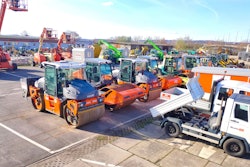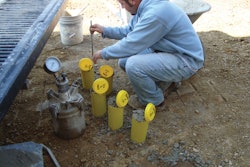At its core, rental management software needs to help a business owner to make better decisions, improve service and in the end, produce a better bottom line. Every company using rental management software has unique requirements, so flexibility is imperative; software needs to adapt to your business rather than your business adapting to the software. As your company grows, the software needs to be scalable, fully integrated, customizable, mobile and most importantly, easy to use. Today's rental software should also help you realize improved efficiencies such as increased revenue, reduced capital expenses, increased revenue per employee, reduction in overhead expenses and reduced maintenance costs.
1. Having software that can facilitate the necessary business processes quickly and easily is key. A salesperson should be able to easily access data on his clients/prospects from his phone, tablet or computer. He or she needs to know what the outstanding invoice balances are, what equipment each jobsite has, as well as the availability of equipment to fulfill requests. Having all this information easily available allows a quote to be created quickly and accurately. The software should provide the option to email the quote for quick delivery to the client.
2. Once a quote is approved, the software should have the ability to generate a rental contract directly from the quote. This ensures all negotiated terms and pricing remain intact and reduces errors.
3. Once the rental contract details are complete, but before delivery, the rental contract should feed into a dispatching system for scheduling the delivery of the equipment or services where applicable. Once scheduled, the dispatch tickets should be automatically sent to the drivers via mobile phone/integrated device. The drivers should then be able to update relevant information through the app that syncs back to the software.
4. Upon delivery of the equipment, many clients wish to capture a signature indicating receipt of delivery. To date, most in the industry are still using a paper ticket for this. As this transitions to paperless, a fully integrated rental software package needs to allow this to be done electronically via mobile application by signing directly on the tablet/phone, and then email a copy of the signed ticket to the client for their records.
5. Rental software should provide the ability to easily manage exceptions during a job. If a piece of equipment fails, the software should facilitate the swap out of the failed piece of equipment with easy-to-use swap out functions. Having the ability to transfer equipment easily between jobsites without returning to the yard is also a critical component to accurately tracking rental equipment. The rental software should provide a mechanism to do this task easily.
6. Rental fleet maintenance is extremely important to achieving a profitable ROI on each piece. Rental software should have a fully integrated work order/maintenance area to easily generate work orders for preventive maintenance. Preventive maintenance should be automatically triggered based on meter readings/rental days/frequency. Generating purchase orders automatically and directly from the work order to facilitate purchasing repair parts or third-party service should be an easy task to reduce duplicate entry.
7. Rental software needs to generate invoices to clients easily, accurately, and be very flexible to meet the client demands. It should have ability to batch invoice all open and approved rental contracts based on set criteria, and group multiple rental contracts for a job/customer/PO, etc. into a single invoice. Invoices should then be seamlessly integrated into whatever accounting package is being used, either integrated into the rental software or more importantly, using an existing third-party accounting package.
8. Rental software should have very robust reporting capabilities. Canned reports should provide many of the industry standard reporting metrics. The rental software should also provide the ability to generate custom key performance indicator dashboards, custom reporting, and data warehouses. This information should be easily accessible via the application, a mobile device or a webpage, depending on the specific needs.
9. From a customer-facing perspective, rental software should provide a customer (foreman/project manager) with visibility to all equipment they have on a jobsite, the ability to see what is available for rent, and a look at outstanding invoices.
10. Most importantly, rental software needs to provide software support and consulting that truly understands the industry. Many industries run 24/7 and the support team needs to be available all the time. Timely responses and quick resolutions to issues are extremely important. Providing software training, a proven implementation process and business consulting are important as well.
In conclusion, all of the above should make it easier to track the revenue, location and history of an individual asset including utilization, total costs of operations, total cost of ownership, and return on investment.




















